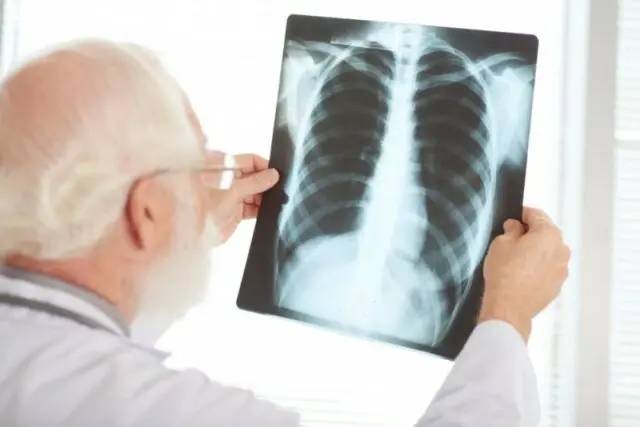In the modern medical world, technology has transformed the ways healthcare professionals diagnose and treat patients. One of the sympathetic revolutions of this space is the DICOM Imaging standard. Such flawless capability unleashed in healthcare has gestured through pacs medical imaging software by ensuring a provisional tool for storing, retransmitting and exchanging alleged imageries.
Exploring more takes a hook on this voguish instrument, it’s paramount to take a deeper glimpse of it and appreciate the many intricate components that surround the full anatomy of this robust image network. Such intricate mechanisms support this authoritative system. Such support empowers one to elaborate their Frames with different protagonists’ inclination to innovate and manipulate Idea tokenized scaler formulas.
What is DICOM?
In the early 1980s, the American College of Radiology (ACR) and the National Electrical Manufacturers Association (NEMA) came together to create an incredible and vital universal system that would change healthcare for the better. DICOM, the word of which being derived from the phrase Digital Imaging and Communications in Medicine, has come to be recognized as an essential tool assisting in medical studies and healthcare workplaces the world over.

This record of digital data with images and parameters can be generated by various imaging devices, such as x-rays, Magnetic Resonance Imaging (MRI) scans, ultrasounds, and plenty more. Additionally, secure transmission of information contained in these recordings with the use of the same correlated parts of DICOM also contributes toward smarter, optimised and informed medical diagnoses and treatments.
Components of a DICOM Imaging Network
A DICOM imaging network consists of several key components, each playing a vital role in the process of acquiring, storing, transmitting, and interpreting medical images.
DICOM Devices
The medical devices responsible for image acquisition are at the heart of a DICOM imaging network. These can include X-ray machines, computed tomography (CT) scanners, magnetic resonance imaging (MRI) machines, ultrasound devices, and more. DICOM-compliant devices capture patient images and associated data in a standardised format, ensuring compatibility with the rest of the network.
DICOM Image Data
DICOM image data is the primary output of medical imaging devices. It encompasses not only the actual images but also patient information, device settings, acquisition details, and more. DICOM files use a specific file format (.dcm) to encapsulate this data in a structured manner, allowing for easy access and interpretation.
DICOM Image Archive (PACS)
A Picture Archiving and Communication System (PACS) serves as the central repository for storing DICOM images and related data. PACS app enables healthcare providers to access and retrieve patient images from a secure and centralised location. It also allows for the efficient management of large volumes of medical images, facilitating rapid retrieval and sharing.
DICOM Workstations
DICOM workstations are specialised computers or software applications used by radiologists and other healthcare professionals to view and interpret medical images. These workstations support a wide range of image manipulation tools and provide a platform for making diagnoses and treatment decisions based on the images.
DICOM Communication Network
The communication network is a key element aiding communication between varying parts of the healthcare system, making a seamless exchange of data possible. With the help of this valuable feature, the exchange of DICOM images and detailed information associated with them simultaneously reflects from medical devices into the PACS, from the PACS to DICOM workstations from one healthcare facility to another. This smooth exchanging process is fabricated with assistance from the usage of standardised protocols, such as TCP/IP protocol which securely and reliably carries out the transmission.
DICOM Services
DICOM services encompass a set of standardised protocols and procedures that define how data is exchanged within a DICOM imaging network. These services include image storage, query and retrieval, print, and workflow management. By adhering to these services, healthcare providers can ensure the consistency and integrity of DICOM data throughout the network.
DICOM Modality Worklist
The DICOM Modality Worklist (MWL) is a component that enhances workflow efficiency in medical imaging. It provides radiologists and technologists with a list of scheduled patient examinations, along with relevant patient information, prior to image acquisition. This helps streamline the imaging process and ensures that the correct patient data is associated with each image.
DICOM Conformance Statements
DICOM conformance statements are documents provided by manufacturers of DICOM-compliant devices. These statements outline the device’s capabilities, features, and compatibility with the DICOM standard. Healthcare facilities use these statements to assess the suitability of a device for their imaging network and to ensure seamless integration.
DICOM Security
Security is a paramount concern in healthcare, and DICOM addresses this through its security features. DICOM networks implement authentication, access control, encryption, and audit trails to protect patient data and maintain confidentiality. Compliance with regulations such as the Health Insurance Portability and Accountability Act (HIPAA) is essential to safeguard patient information.

How DICOM Imaging Networks Work
Understanding the components of a DICOM imaging network is crucial, but it’s equally important to grasp how these components interact to enable the seamless flow of medical images and data. Here’s a simplified overview of how a DICOM imaging network typically operates:
Image Acquisition: DICOM-compliant medical devices capture patient images along with relevant metadata. The devices convert this information into DICOM format.
Image Transfer: The acquired images are transmitted over the DICOM communication network to the PACS. This network may be wired or wireless, depending on the healthcare facility’s infrastructure.
Image Storage: The PACS stores the received DICOM images and associated data in a secure repository. These images are organised and indexed for easy retrieval.
Image Retrieval: Healthcare professionals, such as radiologists, use DICOM workstations to access and retrieve patient images from the PACS. They can view, analyse, and interpret the images on these workstations.
Image Distribution: In some cases, medical images need to be shared with other healthcare facilities or specialists. DICOM communication networks facilitate the secure transmission of images between different parts of the healthcare system.
Reporting and Documentation: Radiologists and other healthcare providers generate reports based on their interpretation of the images. These reports are typically stored electronically and can be attached to the patient’s medical record.
Archiving and Long-Term Storage: Organisations in the medical field are required to adhere to specific regulations that seek to guarantee accessible patient data long term. To fulfil these regulations and requirements, many images are dutifully archived in past retention for extensive time frames.
Conclusion
This versatile system is achieved through the interconnection of multiple devices, such as DICOM equipment, Picture Archiving and Communication Systems (PACS), and further PCs or computers with links to communication networks, creating an intuitive network.
In collaboration with enacted security measures, these interconnected devices work harmoniously to guarantee functioning interoperability in all aspects of individual workflows of the healthcare industry.
DICOM imaging networks offer numerous benefits, including improved interoperability, workflow efficiency, data security, and cost savings. However, they also come with challenges related to integration complexity, data volume, and security concerns.
Why should you choose QSS Technosoft Inc for DICOM integration?
At QSS Technosoft Inc, we strongly believe that we are the best choice for DICOM integration solutions. Our professional team has a sound background in the healthcare industry and they leverage their staggering technical expertise to provide our clients with seamless integration.
Our team’s extensive knowledge in both DICOM and other healthcare-related technologies helps us keep up with an ever-evolving industry. They have all kept their skills sharp and updated in order to deliver the best possible services to our customers.
Ensuring data safety and confidentiality is fundamental in the healthcare world and we take extra measures to fully guarantee this. We always focus on integrating reliable security protocols into our DICOM systems in order to comply with end-to-end privacy regulations.
We are proud to mention that our work has been recognized by leading B2B reviews and research platforms like GoodFirms, Clutch, MirrorView, and many more.


Exploring the Different Components of a DICOM Imaging Network